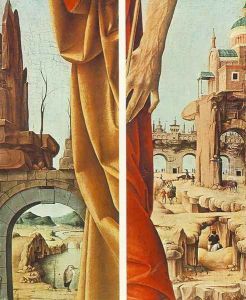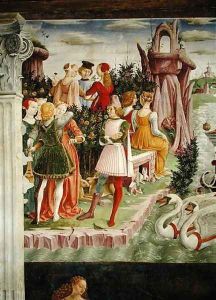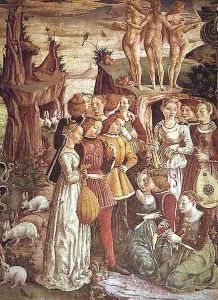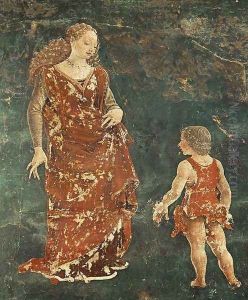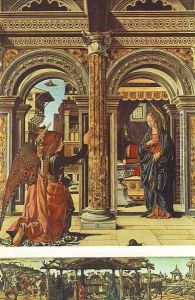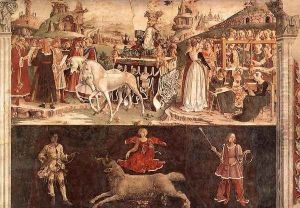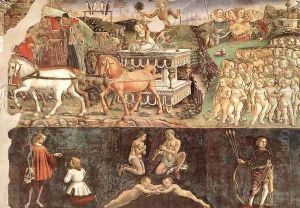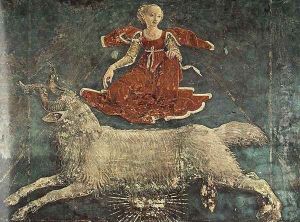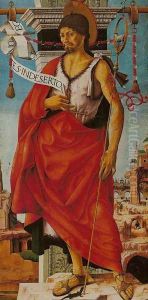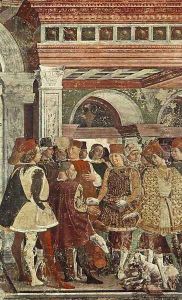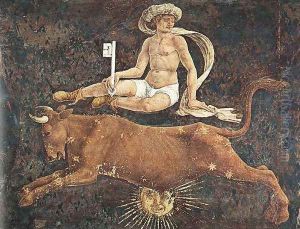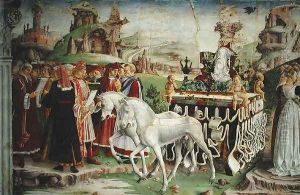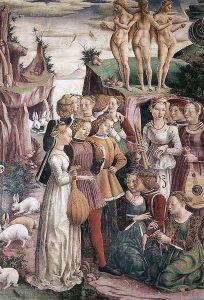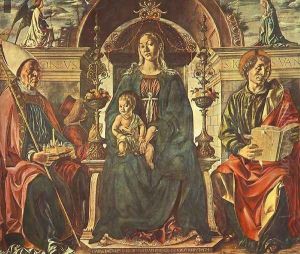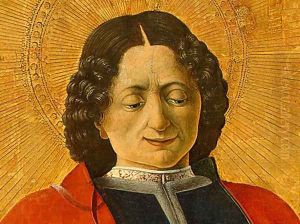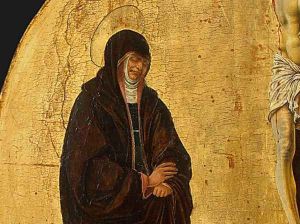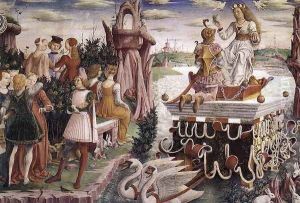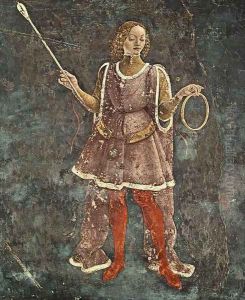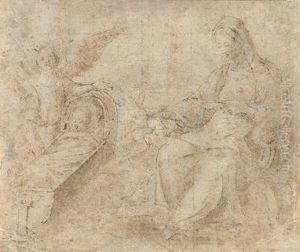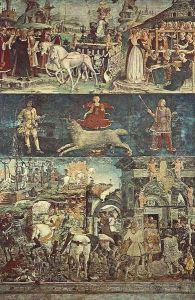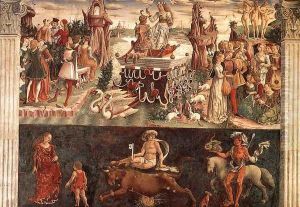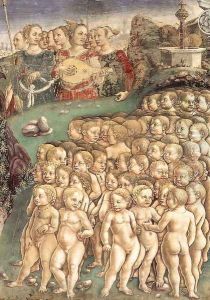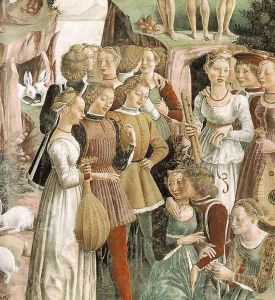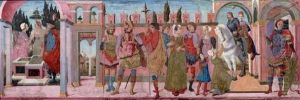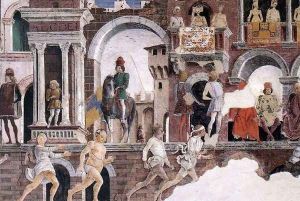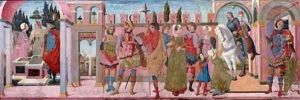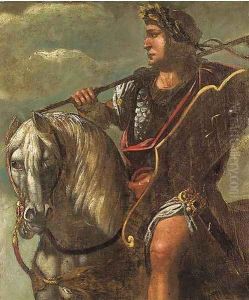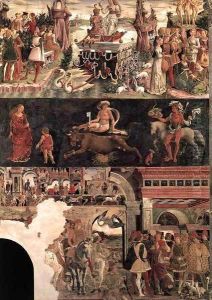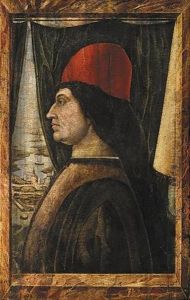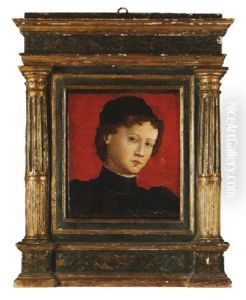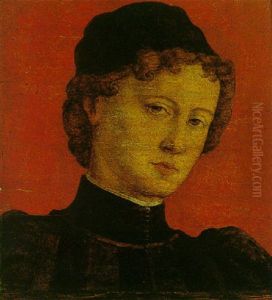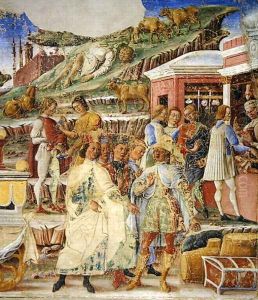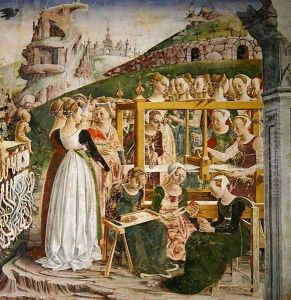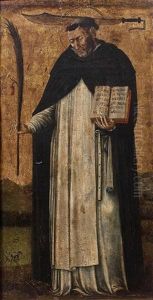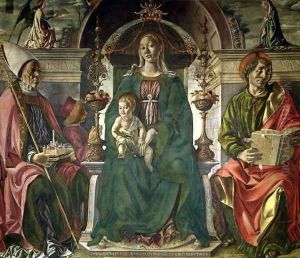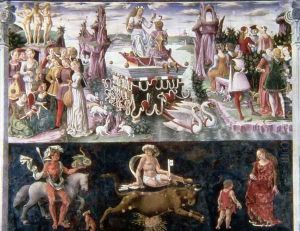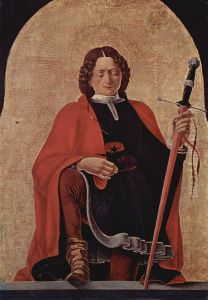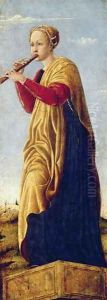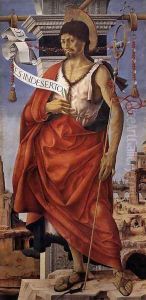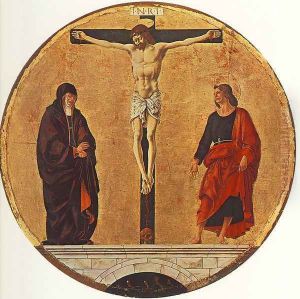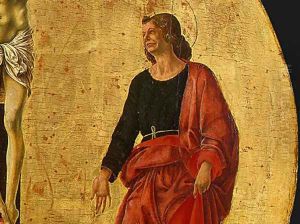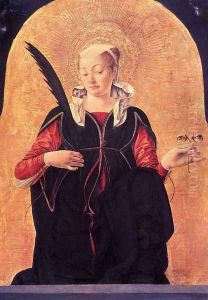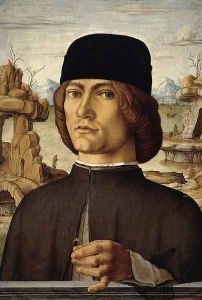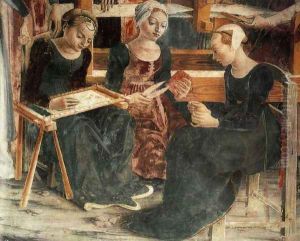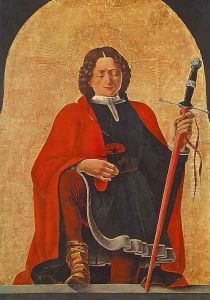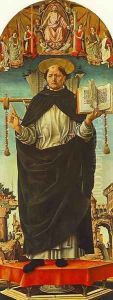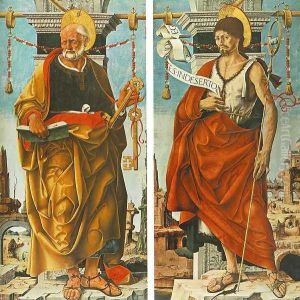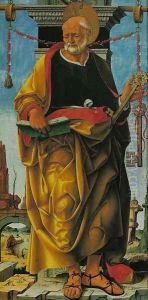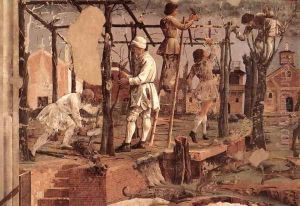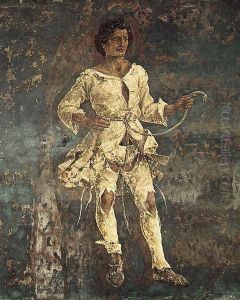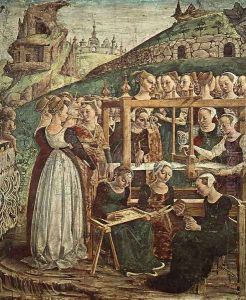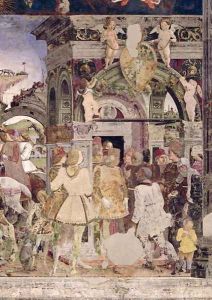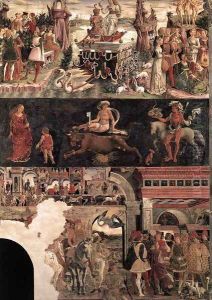Francesco Del Cossa Paintings
Francesco del Cossa was an Italian Renaissance painter who is most renowned for his work in the city of Ferrara. Born around 1430, Cossa is one of the key figures associated with the Ferrarese school of painting, which flourished during the mid-15th century under the patronage of the Este family.
Cossa's early life and training are not well documented, but it is believed that he was a pupil or follower of Cosimo Tura, one of the leaders of the Ferrarese school. His style, characterized by its strong linear elements, detailed landscapes, and elaborate costumes, reflects the influence of Tura's distinctive approach to painting.
One of Cossa's most celebrated works is a series of frescoes for the Palazzo Schifanoia in Ferrara, which he painted around 1470. These frescoes are part of a larger cycle that depicts the months of the year and their corresponding astrological signs, as well as scenes from mythology and daily life. Cossa was responsible for three of the months: March, April, and May. His frescoes are noted for their vibrant colors, intricate details, and the animated expressions of the figures.
Despite his contributions to the Palazzo Schifanoia, there is little documentation of Cossa's life, and much of what is known about him comes from his surviving works. In addition to frescoes, he also painted altarpieces and panels, many of which exhibit his skillful use of perspective and his ability to convey texture and surface qualities.
Cossa's career took him beyond Ferrara; he also worked in Bologna, where he contributed to the decoration of the Bentivoglio Chapel in the church of San Giacomo Maggiore. His work in Bologna demonstrates a continued refinement of his style and an adaptation to the tastes of his patrons in that city.
Francesco del Cossa's death is believed to have occurred around 1477. Although his career was relatively short, his work had a lasting impact on the Ferrarese school and the development of Renaissance art in northern Italy. His paintings are celebrated for their creativity, expressiveness, and the glimpse they provide into the culture and society of 15th-century Italy.
